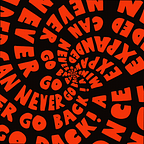The Simplest Combo to Maximize Your Productivity
In an age of endless productivity apps, nothing comes close to the deceptively simple combo of The Ivy Lee Method + Analog to master your productivity.
When our creative agency, MUCHMORE, was forced to abandon our sleek, modern, office space, and adopt a virtual workflow last year, we tried countless apps/tools/systems to help stay on task.
Slack, Notion, Quip, Google Docs, Dropbox Paper, FaceTime, Figma, Ultraworking, Superhuman, Zoom, Trello, etc., etc. etc. Sound familiar?
Many tools were quickly abandoned, others make up our current (frankensteined) workflow. For productivity however, even the most robust apps didn’t seem to help.
It felt like there wasn’t a solution on the planet that could help dial in our focus. Then two things happened on an otherwise forgettable Wednesday:
- A post on the Ivy Lee Method entered my feed (on TikTok of all places.)
- And a small box from UGMONK arrived at my door.
The Ivy Lee Method
The Ivy Lee Method is deceptively simple, yet radically effective. If you want the full backstory, James Clear’s post about the method is worth reading, but here are the basics:
- At the end of the day write down the 6 most important tasks for the next day. (In order, and no more than 6!)
- The next day, start on task #1, you can’t move on to #2 until you have completed the first task and so on.
That’s it. (no, really)
Within the first hour of my first day I understood why it worked. My workflow usually resembles that of a pinball. Bouncing around chipping away, seemingly at random, tinkering, dabbling on projects, emails, hobbies, plotting pie in the sky ideas.
No surprise I found myself instantly resisting the inflexible linear progression. But looking back, the results are indisputable.
The first few days I made my list on my phone, but I found closing the notes app would render it out of sight, out of mind. I knew I needed something that would be front and center. And that’s where Analog comes in.
Analog
Inside the box on my doorstep that fateful Wednesday was Analog, a product I had backed on kickstarter. Designed and produced by UGMONK creator Jeff Sheldon, Analog is a series of painstakingly designed note cards, and sleek low profile storage base that doubles as a display stand.
Every single facet of Analog is beautifully designed. From the rigid card stock, to the subtle dot grid graphic on the back of each card. From the magnetic lid to the beveled edge of the storage tray in the base.
If you’re thinking “Couldn’t I just use sticky notes, or note cards, or even the notes app in my phone?” Sure. (And that may be all you need.) But also….
User experience matters. Especially when working to establish a new habit. Analog is a beautifully designed object that just feels good to use. It’s an elevated experience. It echoes the modern/minimal aesthetic of our old office. It sits on my desk right next to my computer screen. It doesn’t take up a lot of space, but it is unavoidable in my field of view.
Like PB&J, the whole of ‘Analog + Ivy Lee’ is greater than the sum of its parts.
While Analog is designed around it’s own suggested system for tracking productivity (outlined by a double sided card included in each pack,) they also turn out to be extremely well suited for the Ivy Lee Method.
The only modification to make is to strike a horizontal all all the way across the card just below the sixth line. Your measure for success is crossing that line each day. Of course, this is entirely optional, but does serve as a nice visual cue. (The lines below can be left blank, or used for tasks that pop up throughout the day.)
The Result
Starting at the top item, and working down the list (in order) is initially far more difficult than it seems, but a funny thing happens- a sort of a positive feedback loop of productivity.
In just a few days you become more mindful about what should actually be on your list each day, which in turn makes it easier to complete.
You also get far better at prioritizing that list each day, which in turn makes it less painful to follow in a linear fashion.
People often claim they need more hours in a day, when in reality most of us just need to be more efficient with the hours we already have.
We’ve been recording what we call our “Focus Efficiency” each day since the beginning of the year. Basically measuring productivity by how we feel at the end of each day and list tasks accomplished.
Before implementing this combo into our world we typically hovered around 45% efficient on average. Today we consistently record over 80% efficiency on any given day, essentially doubling our output. If Analog seems expensive, ask yourself what the cost of those lost hours add up to every month.
Analog is available on UGMONK. It does appear to be on sale at the time of this writing, but to be clear- we’re in no way affiliated with UGMONK, and this post is in no way sponsored by them. We just believe in the product and the designer behind it.
MUCHMORE is a creative agency for creators, makers, and doers. Our mission is simple- Assist those in pursuit of creating high quality things. We don’t cut corners. We don’t take shortcuts. We don’t work with just anyone. If you are passionate about the things you put out into the world- we want to help.
Written by Jason Markow. Illustrations by Zach Smith.
